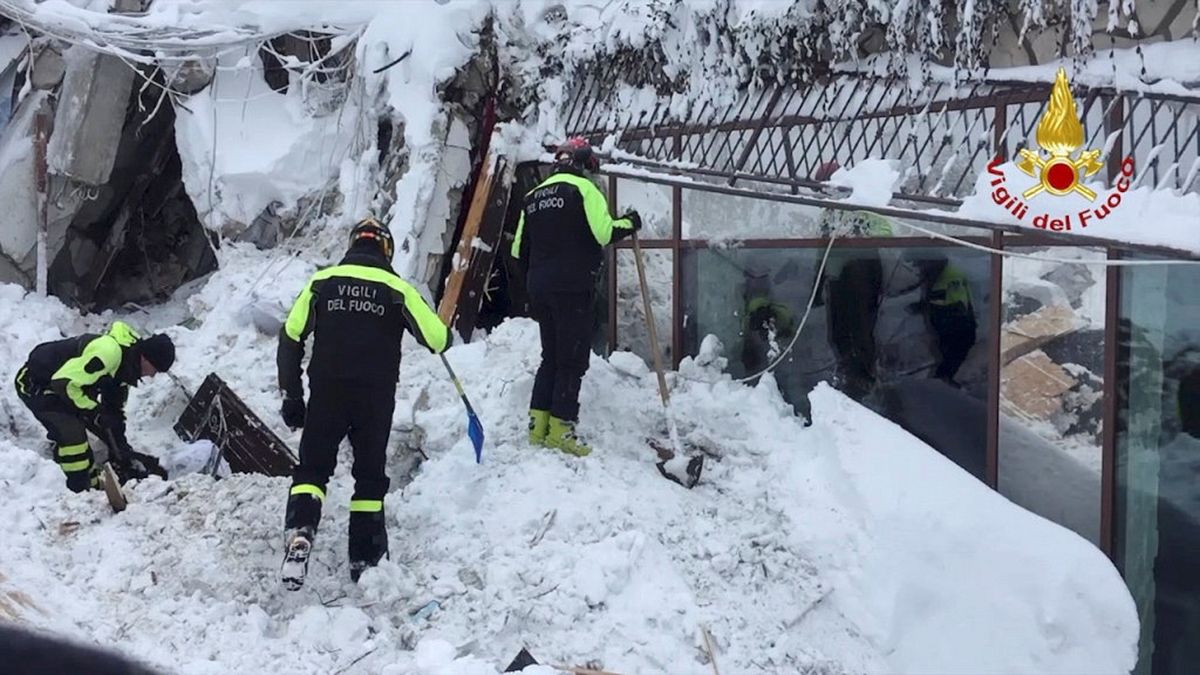The first rescue workers reached the Hotel Rigopiano at around 4am, some 11 hours after the avalanche struck central Italy.
The first rescue workers reached the Hotel Rigopiano at around 4am, some 11 hours after the avalanche struck central Italy.
Conditions were bad and the site was only accessible by ski. They travelled eight kilometres through the night, risking snow drifts and the threat of further avalanches.
Once they were able to enter what was left of the hotel, they found it packed with snow, stones, wood and other debris. But there was also total silence. No voices could be heard.
Italy’s Civil Protection Department estimated there had been 32 people inside. They’d been waiting for a snowplough to take them down the valley. But it arrived too late.
The sheer force of the avalanche all-but-destroyed the building and pushed it some ten metres away from its usual site.
Historic snowfall
There was between two and five metres of snowfall; more than the Abruzzo region had seen in 50 years.
Built at an altitude of 1,200 metres, Hotel Rigopiano stood at the base of the Gran Sasso mountain range, just 50 kilometres from Amatrice, as the crow flies.
There, on the same day as the avalanche, four earthquakes struck ranging in size between magnitude 5.2 and 5.7. They were followed by around 400 aftershocks.
A link between the tremors and avalanche?
The area wasn’t considered to be at risk of an avalanche. So, is there a link between the two phenomena?
Geologist Gian Vito Graziano thinks so.
“The possibility that the avalanche and earthquakes are connected should be recognised, in my opinion. Because there was also a landslide under the snow-blanketed ground. So, it’s highly probable that the two events are linked,” he told euronews.
The latest episodes have re-awoken memories of the even more powerful tremors in 2016: on August 24 in Amatrice and on October 30 in Norcia.
Questions have been raised about whether the deaths and injuries were avoidable.
“Why, in Italy isn’t there a prevention plan? Why isn’t there anybody who can find funds for reconstruction and prevention? I hope that this will be put into motion soon. It’s happened in central Italy – specifically Amatrice – this time, but the next time it could be anywhere,” said Graziano.
Out of 292 who perished in last year’s ‘quakes, 231 people lost their lives in Amatrice. At their funerals, Bishop Domenico Pompili referred to the questions raised about why so many buildings crumbled to the ground, observing:
“Earthquakes don’t kill. The work of man does.”
